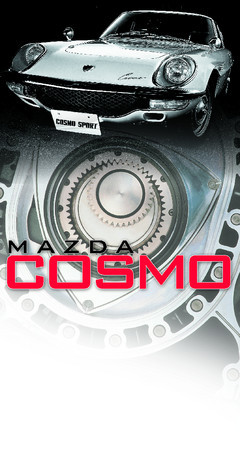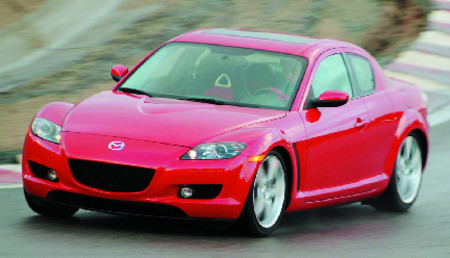Cosmo paved way for rotary enginesCosmo paved way for rota
An engine without pistons, without a crankshaft and without cylinder heads?
It sounds impossible, but if you follow one particular branch on the automotive family tree, you'll find an anomaly. Something really special. Something called a Cosmo.
The internal-combustion engine has changed very little since the beginning. The assorted internal parts used in today's powerplants would easily be recognized by those early inventors who struggled to breathe life into their four-wheeled wonders.
Then there's Mazda and its Cosmo.
For four decades, the company has been developing and refining rotary-engined vehicles that operate like no other. Where some manufacturers tried and eventually abandoned this unique method of propulsion, Mazda managed to turn the rotary into a commercially viable proposition.
The unique powerplant was invented in the mid-1950s by Felix Wankel, who was working for the German NSU automaker. The engine's significance was its simplicity. It was devoid of the usual mechanical hardware found in traditional engines: valves, cylinder heads, bearings, etc. Instead, it used a triangular-shaped rotor, housed within a small, barrel-shaped chamber. Combustion -- the burning of fuel within the chamber -- made the rotor spin and the back wheels turn.
Wankel's invention was heavily eyed by both the automotive and aircraft industries. The benefits of a lighter and simpler power source seemed obvious and more than 100 companies, including General Motors Corp., Ford, Daimler-Benz and Toyota secured a licensing arrangement with NSU.
One of the smaller companies interested in rotary power was Toyo Kogyo. By the early 1960s, its fledgling Mazda automotive division was mainly building three-wheeled commercial trucks. Yet, it was among the few companies to eventually be granted a license to develop and ultimately manufacture the rotary.
By early 1963, Mazda engineers were busy refining the Wankel design. Among the many problems was wear and tear on the rotor housing as well as heavy oil consumption, both of which severely reduced engine life.
That fall, two rotary prototypes were driven from the Hiroshima factory to be displayed at the Tokyo Motor Show. To showcase the revolutionary engine, Mazda came up with a slick two-seater sports coupe, the Cosmo 110S.
Although the press and the public were impressed, it would take a further four years to ready the car for shipment to dealers. When it did arrive in May of 1967, the high-revving 110-horsepower engine gave the 2,070-pound Cosmo plenty of muscle. As well, the counterbalancing effect of its unique-to-Mazda twin-rotor design smoothed out the inherent roughness of Wankel's early efforts.
The Cosmo beat the NSU Ro80 to market by three months, earning it the title of the world's first production rotary.
To go with its thoroughly modern look, the rear-wheel-drive car featured advancements such as a semi-independent rear suspension, front disc brakes, adjustable steering column and a complete set of gauges.
The Cosmo also delivered spirited performance that matched its sporty good looks. Shifting via a four-speed manual transmission, the car could sprint to 60 mph in less than 9 seconds and reach a top speed of about 125 mph. These numbers are actually similar to Mazda's latter-day sports car, the nonrotary Miata.
Mazda sold just 343 of its $4,100 Cosmo coupes in the first year, all to Japanese customers. An upgraded model that went on sale in late 1968 came with a stronger 128-horse rotary as well as a five-speed gearbox, 15-inch wheels, power brakes and available air conditioning. In four years, fewer than 1,200 right-hand-drive-only cars found new homes, mostly in Japan although a few 110-horsepower export versions were shipped to Great Britain, continental Europe and Canada.
Having proved its worth, although still suffering from premature engine-failure issues, Mazda retired the Cosmo after 1972. The company instead chose to install the rotary on higher-volume four- and five-seat coupes, sedans as well as pickups before again focusing on sports cars with the enormously successful RX line which continued in one way, shape or form until the mid-1990s.
After an eight-year hiatus, Mazda returned to rotary power with its 2004 RX-8.
The rotary engine has evolved over the years, but the idea of a unique, fun-to-drive car with a unique, fun-to-flog engine -- began by the Cosmo -- has remained.
Malcolm Gunn is a feature writer with Wheelbase Communications. He can be reached on the Web at www.wheelbase.ws/mailbag.html. Wheelbase Communications supplies automotive news and features to newspapers across North America.























